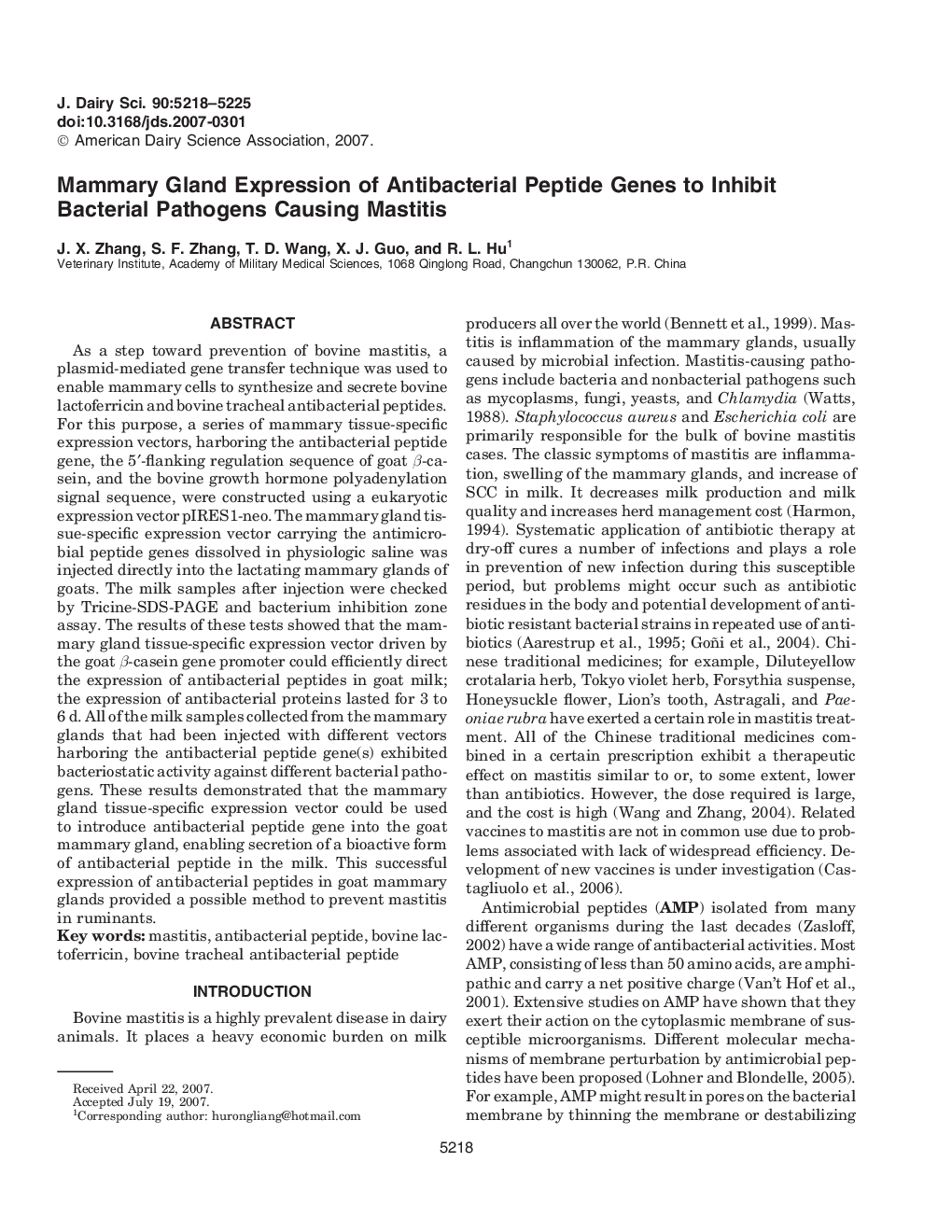| Article ID | Journal | Published Year | Pages | File Type |
|---|---|---|---|---|
| 2440011 | Journal of Dairy Science | 2007 | 8 Pages |
Abstract
As a step toward prevention of bovine mastitis, a plasmid-mediated gene transfer technique was used to enable mammary cells to synthesize and secrete bovine lactoferricin and bovine tracheal antibacterial peptides. For this purpose, a series of mammary tissue-specific expression vectors, harboring the antibacterial peptide gene, the 5â²-flanking regulation sequence of goat β-casein, and the bovine growth hormone polyadenylation signal sequence, were constructed using a eukaryotic expression vector pIRES1-neo. The mammary gland tissue-specific expression vector carrying the antimicrobial peptide genes dissolved in physiologic saline was injected directly into the lactating mammary glands of goats. The milk samples after injection were checked by Tricine-SDS-PAGE and bacterium inhibition zone assay. The results of these tests showed that the mammary gland tissue-specific expression vector driven by the goat β-casein gene promoter could efficiently direct the expression of antibacterial peptides in goat milk; the expression of antibacterial proteins lasted for 3 to 6 d. All of the milk samples collected from the mammary glands that had been injected with different vectors harboring the antibacterial peptide gene(s) exhibited bacteriostatic activity against different bacterial pathogens. These results demonstrated that the mammary gland tissue-specific expression vector could be used to introduce antibacterial peptide gene into the goat mammary gland, enabling secretion of a bioactive form of antibacterial peptide in the milk. This successful expression of antibacterial peptides in goat mammary glands provided a possible method to prevent mastitis in ruminants.
Related Topics
Life Sciences
Agricultural and Biological Sciences
Animal Science and Zoology
Authors
J.X. Zhang, S.F. Zhang, T.D. Wang, X.J. Guo, R.L. Hu,
